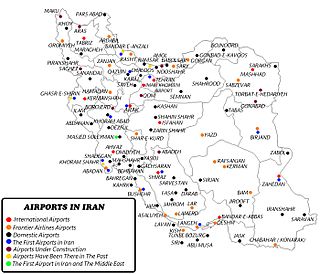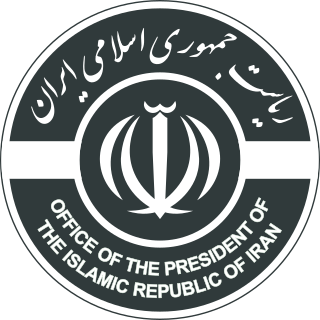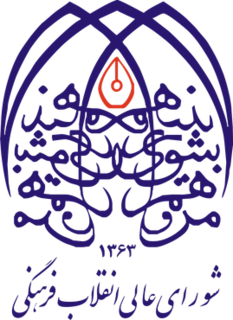 W
WThe first level of country subdivisions of Iran are the provinces.
 W
WThe Assembly of Experts —also translated as the Assembly of Experts of the Leadership or as the Council of Experts— is the deliberative body empowered to appoint the Supreme Leader of Iran. All directly elected members must first be vetted by the Guardian Council.
 W
WThe Cabinet of Iran is a formal body composed of government officials, ministers, chosen and led by a President. Its composition must be approved by a vote in the Parliament. According to the Constitution of the Islamic Republic of Iran, the President may dismiss members of the cabinet, but must do so in writing, and new appointees must again be approved by the Parliament. The cabinet meets weekly on Saturdays in Tehran. There may be additional meetings if circumstances require it. The president chairs the meetings.The Supreme Leader has the power to dismiss cabinet members like ministers and vice presidents, as well as the President, at any time, regardless of the Parliament's decisions.
 W
WThe Civil Aviation Organization of Islamic Republic of Iran (CAO.IRI), is Iran's civil aviation agency. It is the statutory corporation which oversees and regulates all aspects of civil aviation in Iran. The organization was established in July 1946 and its headquartered at Mehrabad International Airport in Tehran. It investigates aviation accidents and incidents in Iran.
 W
WThe Constitution of the Islamic Republic of Iran was adopted by referendum on 2 and 3 December 1979, and went into force replacing the Constitution of 1906. It has been amended once, on 28 July 1989. The constitution has been called a "hybrid" of "theocratic and democratic elements". Articles One and Two vest sovereignty in God; but article Six "mandates popular elections for the presidency and the Majlis, or parliament." However, main democratic procedures and rights are subordinate to the Guardian Council and the Supreme Leader, whose powers are spelled out in Chapter Eight.
 W
WThe Election Office is the body charged for implementation of election procedures in Iran and is subordinate to the Ministry of Interior.
 W
WThe Expediency Discernment Council of the System is an administrative assembly appointed by the Supreme Leader and was created upon the revision to the Constitution of the Islamic Republic of Iran on 6 February 1988. It was originally set up to resolve differences or conflicts between the Majlis and the Guardian Council, but "its true power lies more in its advisory role to the Supreme Leader." According to Hooman Majd, the Leader "delegated some of his own authority to the council — granting it supervisory powers over all branches of the government" following President Mahmoud Ahmadinejad's election in 2005.
 W
WThe General Inspection Organization of Iran (GIO) is linked to the Judiciary of Iran. It is also called the State Inspectorate Organization of Iran. The organization is a member of Asian Ombudsman Association and International Ombudsman Institute. Also it is the member of International Association of Anti Corruption Authorities. However it is not the primary anti corruption body and there are several agencies including Suprem Audit Court and Ministry of Justice and Parliamentary Commission for enforcing principle 90 of the constitution which are involved in fighting corruption and enforcing United Nations Convention Against Corruption.
 W
WThe Government of the Islamic Republic of Iran is the ruling state and current political system in Iran, in power since the Islamic revolution and fall of the Pahlavi dynasty in 1979.
 W
WThe Guardian Council, also called Council of Guardians or Constitutional Council is an appointed and constitutionally mandated 12-member council that wields considerable power and influence in the Islamic Republic of Iran.
 W
WA nationwide judicial system in Iran was first implemented and established by Abdolhossein Teymourtash under Reza Shah, with further changes during the second Pahlavi era.
 W
WThe Interim Government of Iran was the first government established in Iran after the Iranian Revolution. The regime was headed by Mehdi Bazargan, one of the members of the Freedom Movement of Iran, and formed on the order of Ruhollah Khomeini on 4 February 1979. From 4 to 11 February, Bazargan and Shapour Bakhtiar, the Shah's last Prime Minister, both claimed to be the legitimate prime minister; Bakhtiar fled on 11 February. Mehdi Bazargan was the prime minister of the interim government and introduced a seven-member cabinet on 14 February 1979. Ebrahim Yazdi was elected as the Foreign Minister.
 W
WThe interim government of the Islamic Republic of Iran was established after the assassination of Mohammad-Ali Rajai (President) and Mohammad Javad Bahonar on 30 August. In accordance with the constitution, a Provisional Presidential Council formed the same day and proposed Mohammad-Reza Mahdavi Kani as Prime Minister to the Majlis. Majlis voted in favour of him on 2 September. His cabinet also received approval of the Majlis on 3 September. The main responsibility of this government was holding presidential elections. On 13 October, Ali Khamenei officially became president. His Prime Minister, Mir-Hossein Mousavi received Majlis's approval on 29 October and then the new government replaced Mahdavi-Kani's interim government.
 W
WIran is the official daily newspaper of the government of Iran.
 W
WThe Islamic Republic News Agency, or IRNA, is the official news agency of the Islamic Republic of Iran. It is government-funded and controlled under the Iranian Ministry of Culture and Islamic Guidance. The agency also publishes the newspaper Iran. As of 2020, the Managing Director of IRNA is Mohammad Reza Noroozpour. IRNA has 60 offices in Iran and 30 more in various countries around the world.
 W
WThe Islamic Republic of Iran was founded after the 1979 overthrow of the Pahlavi dynasty by the Islamic Revolution, and its legal code is based on Islamic law or sharia, although many aspects of civil law have been retained, and it is integrated into a civil law legal system. According to the constitution of the Islamic Republic, the judiciary in Iran "is an independent power". The entire legal system—"from the Supreme Court to regional courts, all the way down to local and revolutionary courts"—is under the purview of the Ministry of Justice, but in addition to a Minister of Justice and head of the Supreme Court, there is also a separate appointed Head of the Judiciary. Parliamentary bills pertaining to the constitution are vetted by the Council of Guardians.
 W
WThe legislature of Islamic republic of Iran consists of two components, a unicameral parliamentary chamber called Islamic Consultative Assembly and a reviewing power, the Guardian Council of the Constitution which is more powerful.
 W
WThe List of members from the fifth term of the Assembly of Experts. consists of names of the members during the fifth and current term of the Assembly of Experts from 2016 to 2024. Elections for the Assembly of Experts occurs every 8 years.
 W
WThe List of members from the first term of the Assembly of Experts. consists of names of the members during the first term of the Assembly of Experts from 1982 to 1990. Elections for the Assembly of Experts occurs every 8 years.
 W
WThe List of members from the fourth term of the Assembly of Experts. consists of names of the members during the fourth term of the Assembly of Experts from 2006 to 2016. Elections for the Assembly of Experts occurs every 8 years. However, for the fourth term it was 10 years because the elections that took place for the fifth term was planned for 2014 but was postponed to 2016 in order to be held alongside the 2016 Iranian legislative election.
 W
WThe List of members from the third term of the Assembly of Experts. consists of names of the members during the third term of the Assembly of Experts from 1998 to 2006. Elections for the Assembly of Experts occurs every 8 years.
 W
WThis is a list of the presidents of the Islamic Republic of Iran since the establishment of that office in 1980. The president of Iran is the highest popularly elected official in the country. The current president is Hassan Rouhani, since 3 August 2013
 W
WThe Research Center of Islamic legislative Assembly is the research arm of the Iranian parliament (Majlis). This center works primarily and directly for Members of Iranian Parliament, their Committees and staff on a confidential, nonpartisan basis. Its president is Alireza Zakani since 22 July 2020.
 W
WThe Mehr News Agency is an Iranian news agency headquartered in Tehran, owned by the Islamic Ideology Dissemination Organization (IIDO).
 W
WThis is a list of Iranian officials with their titles.
 W
WOrganization for Collection and Sale of State-owned Properties of Iran (OCSSPI), founded in 2001, is affiliated to the Ministry of Economic Affairs and Finance of Iran. Its main purpose is to focus all matters relating to the collection, storage, management and sale of properties that by law are under the ownership, possession, custody or management of the government of Iran.
 W
WThe politics of Iran take place in a framework that officially combines elements of theocracy and presidential democracy. Iran is an Islamic republic in which the supreme leader, president, parliament (Majles) and judicial system share powers reserved to the national government, according to its Constitution.
 W
WThe president of Iran is the head of government of the Islamic Republic of Iran. The president is the highest-ranking official of Iran. The president carries out the decrees, and answers to the Supreme Leader of Iran, who functions as the country's head of state. Unlike the executive in other countries, the president of Iran does not have full control over the government, which is ultimately under the control of the Supreme Leader. Before elections the volunteers must be approved by the guardian council to become a president candidate. Those members of the guardian council are chosen by the supreme leader. The President of Iran is elected for a four-year term by direct vote and is not permitted to run for three consecutive terms.
 W
WThe Prime Minister of Iran was a political post in Iran (Persia) that had existed during several different periods of time starting with the Qajar era until the end of the Pahlavi dynasty. It was also in existence from 1979 to 1989 following the Iranian Revolution, but was abolished in 1989.
 W
WThe Supreme Council of the Cultural Revolution is a conservative-dominated body based in Qom, set up at the time of Ayatollah Khomeini. Its decisions can only be overruled by Iran's Supreme Leader. Most of its members were appointed by Ali Khamenei, Khomeini's successor. The President of Iran is ex officio the chairman of the Council.
 W
WSupreme National Security Council is the national security council of the Islamic Republic of Iran, the current secretary of the Supreme National Security Council of which is Rear Admiral Upper Half Ali Shamkhani. He was appointed to position of secretary by the Supreme Leader Ali Khamenei On 10 September 2013. The council was formed for the protection and support of national interests and Islamic revolution and territorial integrity and national sovereignty of the country. This institution was founded during the 1989 revision of the constitution.